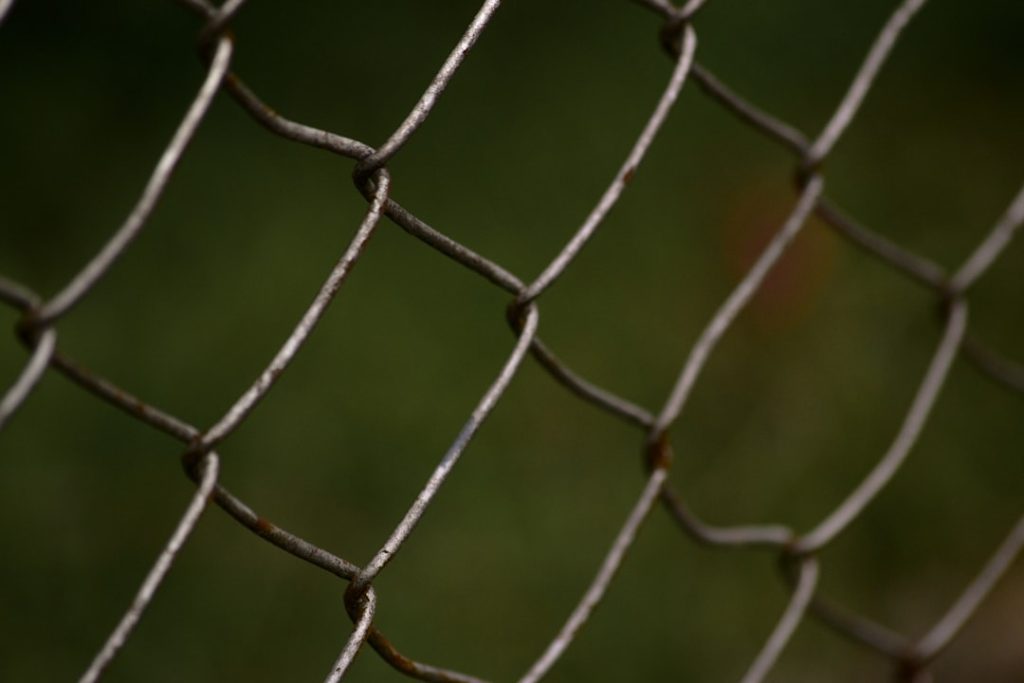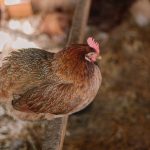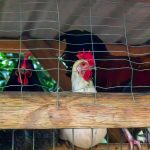Chickens are naturally curious and exploratory, often pecking at various objects in their environment. When chickens begin consuming foam tombstones, it can be problematic. Several factors may contribute to this behavior:
1.
Visual attraction: Chickens are drawn to bright, colorful objects, and foam tombstones often feature eye-catching designs. 2. Mistaken identity: The texture and appearance of foam tombstones may resemble food items, particularly if coated with materials similar to grains or seeds.
3. Nutritional deficiencies: Chickens may seek alternative food sources if their diet lacks essential nutrients. Understanding these underlying causes is crucial for chicken owners to address the issue effectively and prevent potential harm to their flock.
Consuming foam tombstones poses significant health risks for chickens. Foam is not a suitable food source for poultry and can cause:
1. Digestive issues
2.
Intestinal blockages
3. Potential poisoning
Furthermore, foam tombstones may contain toxic chemicals or dyes harmful to chickens if ingested. To protect their flock, chicken owners should take proactive measures to discourage this behavior and provide appropriate alternatives for entertainment and nutrition.
Table of Contents
- 1 Creating a Barrier: Using Physical Obstacles to Keep Chickens Away from Foam Tombstones
- 2 Distracting the Chickens: Providing Alternative Sources of Entertainment and Food
- 3 Training and Conditioning: Teaching Chickens to Avoid Foam Tombstones
- 4 Using Repellents: Applying Safe and Effective Products to Deter Chickens
- 5 Supervision and Monitoring: Keeping an Eye on Chickens to Prevent Access to Foam Tombstones
- 6 Seeking Professional Help: Consulting with Experts for Additional Advice and Solutions
- 7 FAQs
Key Takeaways
- Chickens may be eating foam tombstones due to curiosity, boredom, or a lack of proper nutrition.
- Use physical barriers such as fencing or netting to prevent chickens from accessing foam tombstones.
- Provide alternative sources of entertainment and food to distract chickens from the foam tombstones.
- Train and condition chickens to avoid foam tombstones using positive reinforcement and deterrents.
- Apply safe and effective repellents to deter chickens from approaching foam tombstones.
Creating a Barrier: Using Physical Obstacles to Keep Chickens Away from Foam Tombstones
Creating Physical Barriers
One effective way to prevent chickens from eating foam tombstones is to create physical barriers that restrict their access to these objects. This can be achieved by placing fencing or netting around the area where the foam tombstones are located, effectively preventing the chickens from reaching them. Additionally, chicken owners can consider using covers or enclosures to shield the foam tombstones from the chickens’ view and reach.
Strategic Placement
By implementing physical obstacles, chicken owners can effectively deter their flock from accessing and consuming foam tombstones, reducing the risk of potential health issues and harm. Another approach to creating a barrier is to strategically position the foam tombstones in areas that are less accessible to the chickens. Placing the foam tombstones in elevated locations or behind other structures can make it more challenging for the chickens to reach them, reducing the likelihood of them being consumed.
Relocation and Minimizing Exposure
Additionally, chicken owners can consider relocating the foam tombstones to areas that are not frequented by the chickens, further minimizing the risk of exposure. By utilizing physical obstacles and strategic placement, chicken owners can effectively mitigate the risk of their flock eating foam tombstones and ensure their well-being.
Distracting the Chickens: Providing Alternative Sources of Entertainment and Food

In order to divert the chickens’ attention away from foam tombstones, it is important to provide alternative sources of entertainment and food that are both engaging and nutritious. One approach is to introduce enriching activities and toys that can keep the chickens occupied and stimulated, such as hanging treats or toys for pecking and playing. This can help redirect the chickens’ natural curiosity and energy towards more suitable outlets, reducing their inclination to seek out and consume foam tombstones.
Additionally, providing ample space for the chickens to roam and explore can offer them opportunities for natural foraging and engagement, further diminishing their interest in foam tombstones. Furthermore, offering a varied and balanced diet is essential in ensuring that the chickens are receiving adequate nutrition and are less likely to seek out unconventional food sources such as foam tombstones. Supplementing their diet with fresh fruits, vegetables, and protein-rich treats can help satisfy their nutritional needs and reduce the likelihood of them consuming non-food items.
Additionally, providing access to grit and oyster shell can support their digestive health and prevent them from ingesting foreign objects. By offering alternative sources of entertainment and food, chicken owners can effectively distract their flock from foam tombstones and promote their overall well-being.
Training and Conditioning: Teaching Chickens to Avoid Foam Tombstones
Training and conditioning can play a crucial role in teaching chickens to avoid foam tombstones and other non-food items. One method is to use positive reinforcement by rewarding the chickens with treats or praise when they exhibit desirable behavior, such as ignoring or moving away from foam tombstones. This can help reinforce the idea that avoiding foam tombstones is beneficial and lead to a reduction in their interest in these objects over time.
Additionally, employing deterrents such as noise or motion-activated devices near the foam tombstones can help discourage the chickens from approaching them, further reinforcing the message that these objects are off-limits. Another approach is to utilize aversive conditioning by introducing mild deterrents or unpleasant stimuli when the chickens attempt to peck at or consume foam tombstones. This can include using bitter-tasting sprays or natural deterrents near the foam tombstones, creating a negative association that dissuades the chickens from engaging with these objects.
Consistency and patience are key when implementing training and conditioning methods, as it may take time for the chickens to learn and adapt their behavior. By employing positive reinforcement and aversive conditioning techniques, chicken owners can effectively train their flock to avoid foam tombstones and reduce the risk of ingestion.
Using Repellents: Applying Safe and Effective Products to Deter Chickens
Utilizing safe and effective repellents can be an additional measure to deter chickens from eating foam tombstones. Natural deterrents such as citrus peels, garlic, or hot pepper sprays can be applied near the foam tombstones to create an unpleasant scent or taste that discourages the chickens from approaching or pecking at these objects. Additionally, commercial avian repellent products specifically designed for deterring poultry can be used in accordance with manufacturer instructions to create an unappealing environment around the foam tombstones.
It is important for chicken owners to select repellents that are safe for poultry and do not pose any health risks to their flock. Another option is to consider using visual deterrents such as reflective tape or scare devices near the foam tombstones to create a sense of unease or discomfort for the chickens. These visual cues can disrupt the chickens’ curiosity and deter them from interacting with the foam tombstones.
When using repellents, it is essential for chicken owners to regularly assess their effectiveness and reapply them as needed to maintain their deterrent properties. By incorporating safe and effective repellents into their strategy, chicken owners can further discourage their flock from consuming foam tombstones and promote a safe environment for their poultry.
Supervision and Monitoring: Keeping an Eye on Chickens to Prevent Access to Foam Tombstones

Environmental Maintenance and Structured Routines
Additionally, maintaining a clean and well-maintained coop and outdoor area can help minimize potential exposure to foam tombstones and reduce the likelihood of ingestion. Furthermore, implementing a structured routine for feeding, enrichment activities, and free-range time can help regulate the chickens’ behavior and minimize opportunities for them to encounter foam tombstones. By establishing consistent schedules and providing adequate supervision during these activities, chicken owners can effectively manage their flock’s behavior and prevent access to non-food items.
Proactive Risk Management
Regular monitoring of the chickens’ environment and behavior is crucial in identifying any potential risks or concerns related to foam tombstones and taking proactive measures to address them. By staying vigilant and attentive, chicken owners can safeguard their flock from potential harm associated with consuming non-food items.
Vigilance and Prevention
By combining regular supervision, environmental maintenance, and structured routines, chicken owners can create a safe and healthy environment for their flock, minimizing the risk of foam tombstone ingestion and ensuring the overall well-being of their chickens.
Seeking Professional Help: Consulting with Experts for Additional Advice and Solutions
In some cases, seeking professional help from poultry experts or veterinarians may be necessary to address persistent issues related to chickens eating foam tombstones. These professionals can offer valuable insights into understanding the underlying reasons for this behavior and provide tailored advice on how to effectively manage and prevent it. They may conduct thorough assessments of the chickens’ diet, environment, and overall health to identify any contributing factors that need to be addressed.
Additionally, they can recommend specific training techniques, dietary adjustments, or environmental modifications that are suitable for addressing this behavior in a safe and humane manner. Furthermore, consulting with poultry behaviorists or animal trainers can provide chicken owners with specialized expertise in modifying the chickens’ behavior and implementing effective training methods. These professionals can offer personalized guidance on how to train the chickens to avoid foam tombstones through positive reinforcement, aversive conditioning, or other behavioral modification techniques.
By seeking professional help, chicken owners can gain access to comprehensive support and resources that are tailored to their specific needs and circumstances. This collaborative approach can empower chicken owners with the knowledge and tools needed to effectively address issues related to chickens eating foam tombstones and promote the well-being of their flock. In conclusion, addressing the issue of chickens eating foam tombstones requires a multifaceted approach that encompasses understanding the underlying reasons for this behavior, implementing proactive measures to deter it, and seeking professional guidance when needed.
By creating physical barriers, providing alternative sources of entertainment and food, training and conditioning the chickens, using safe repellents, supervising and monitoring their behavior, and seeking expert advice, chicken owners can effectively mitigate the risk of their flock consuming non-food items such as foam tombstones. Through patience, consistency, and a commitment to promoting a safe environment for their poultry, chicken owners can successfully address this issue and ensure the well-being of their feathered friends.
If you’re struggling with keeping your chickens from eating your foam tombstones, you may want to consider improving the security of your chicken coop. Poultry Wizard offers some helpful tips on how to properly secure your chicken coop to prevent unwanted behavior from your chickens. Check out their article on chicken coop security for more information on how to keep your chickens safe and your decorations intact.
FAQs
What are foam tombstones?
Foam tombstones are decorative props commonly used for Halloween displays. They are typically made of lightweight foam and designed to resemble traditional cemetery headstones.
Why do chickens eat foam tombstones?
Chickens may be attracted to foam tombstones due to their bright colors, unusual shapes, or the texture of the foam material. Additionally, chickens are naturally curious and may peck at objects in their environment.
Is it harmful for chickens to eat foam tombstones?
Yes, it can be harmful for chickens to ingest foam tombstones. Foam is not a natural or safe substance for chickens to consume and can cause digestive issues or blockages.
How can I prevent my chickens from eating foam tombstones?
To prevent chickens from eating foam tombstones, consider placing physical barriers around the tombstones, such as wire fencing or chicken wire. Additionally, providing chickens with plenty of appropriate food and enrichment can help deter them from seeking out non-edible items.
Are there any alternative materials for Halloween decorations that are safe for chickens?
Yes, there are many alternative materials for Halloween decorations that are safe for chickens, such as natural wood, straw, or non-toxic paints and dyes. It’s important to choose decorations that are non-toxic and not easily ingested by chickens.
Meet Walter, the feathered-friend fanatic of Florida! Nestled in the sunshine state, Walter struts through life with his feathered companions, clucking his way to happiness. With a coop that’s fancier than a five-star hotel, he’s the Don Juan of the chicken world. When he’s not teaching his hens to do the cha-cha, you’ll find him in a heated debate with his prized rooster, Sir Clucks-a-Lot. Walter’s poultry passion is no yolk; he’s the sunny-side-up guy you never knew you needed in your flock of friends!







